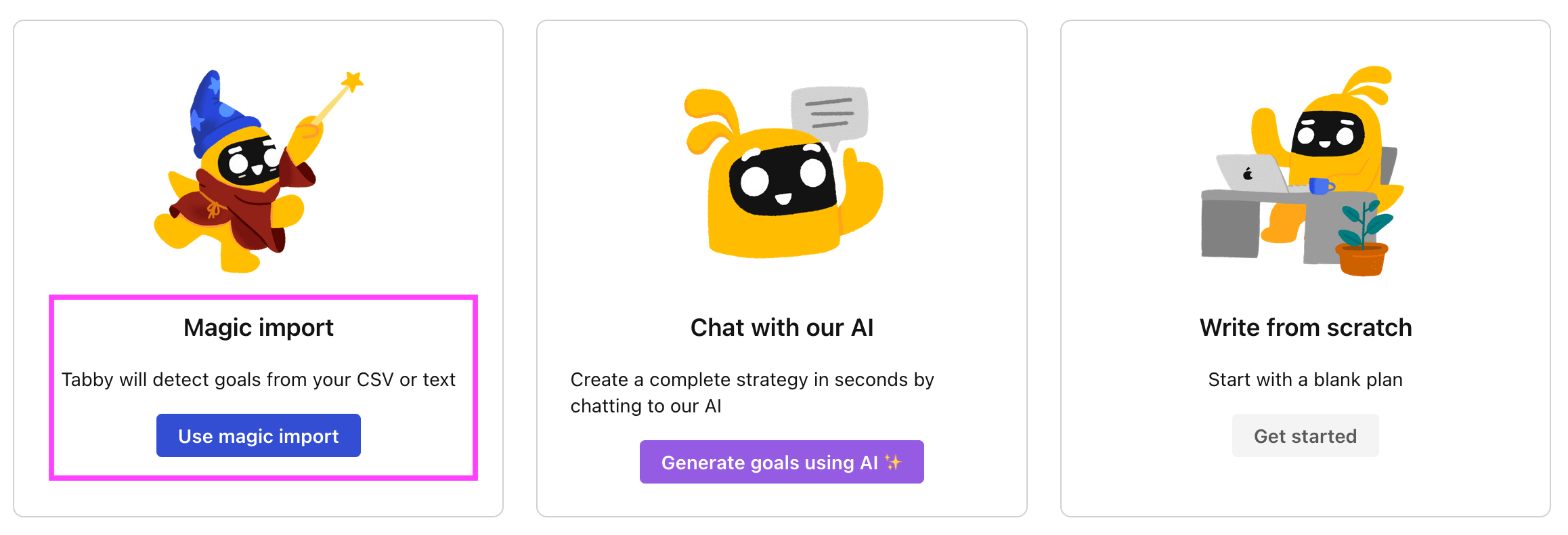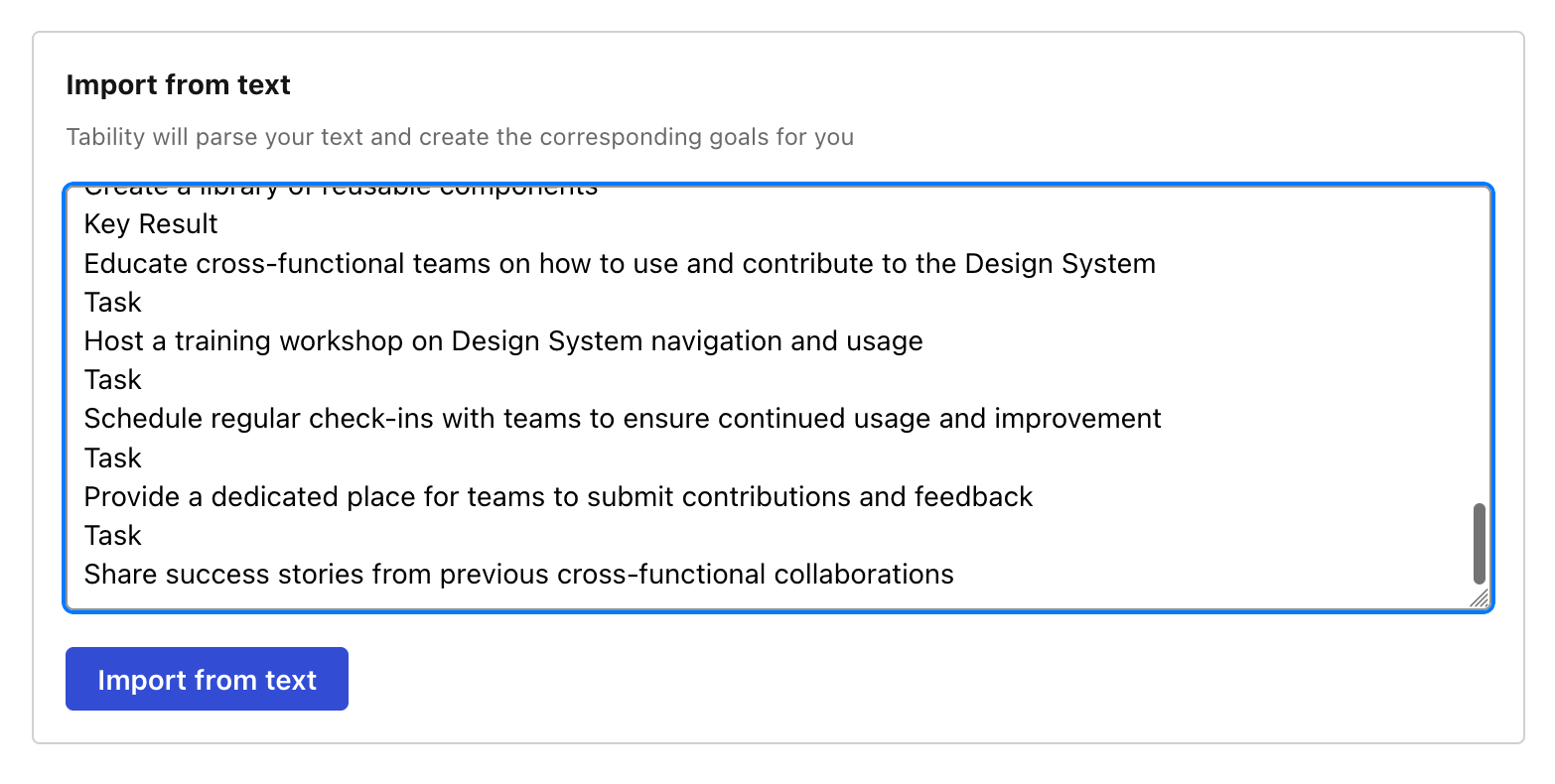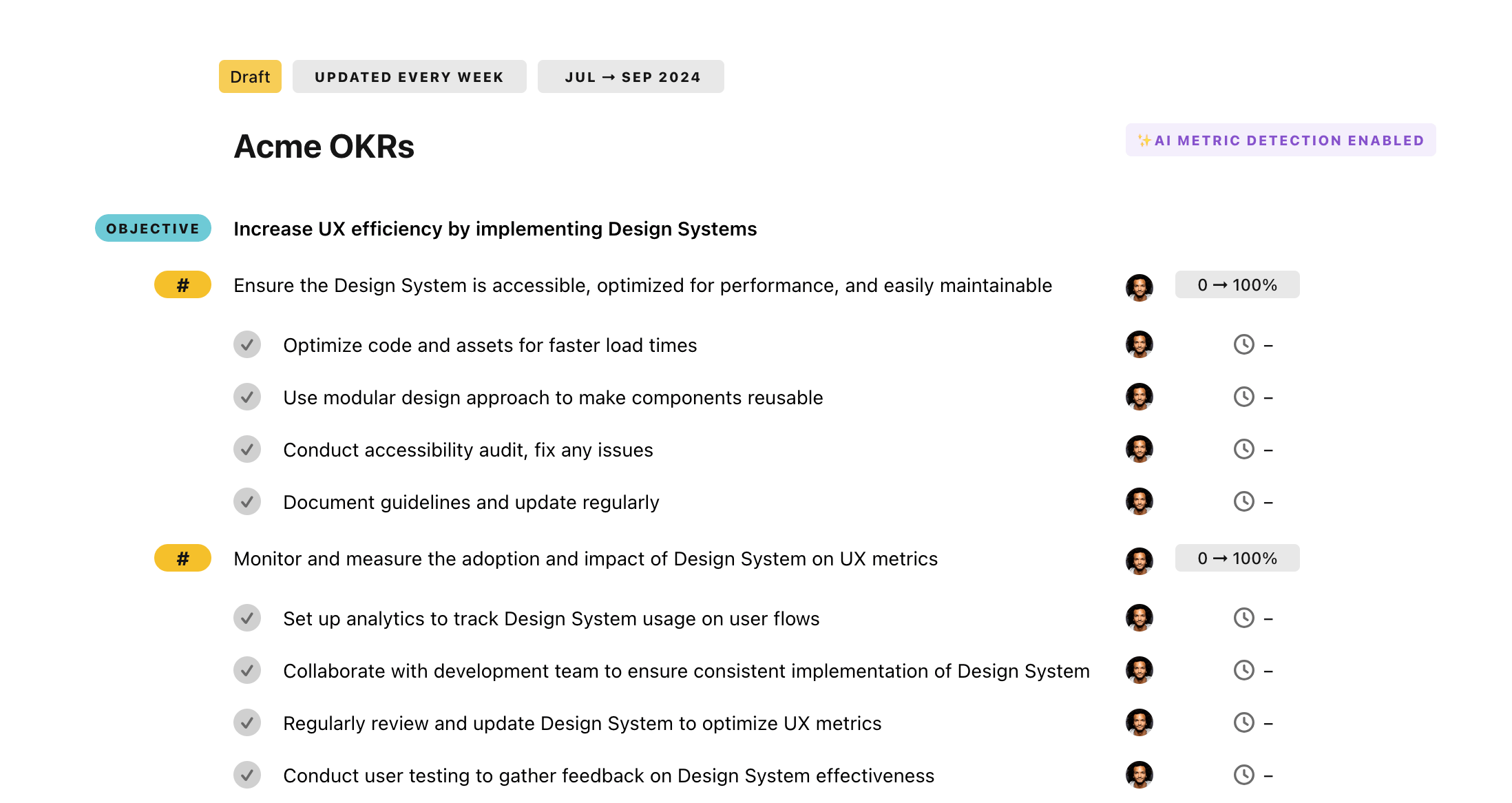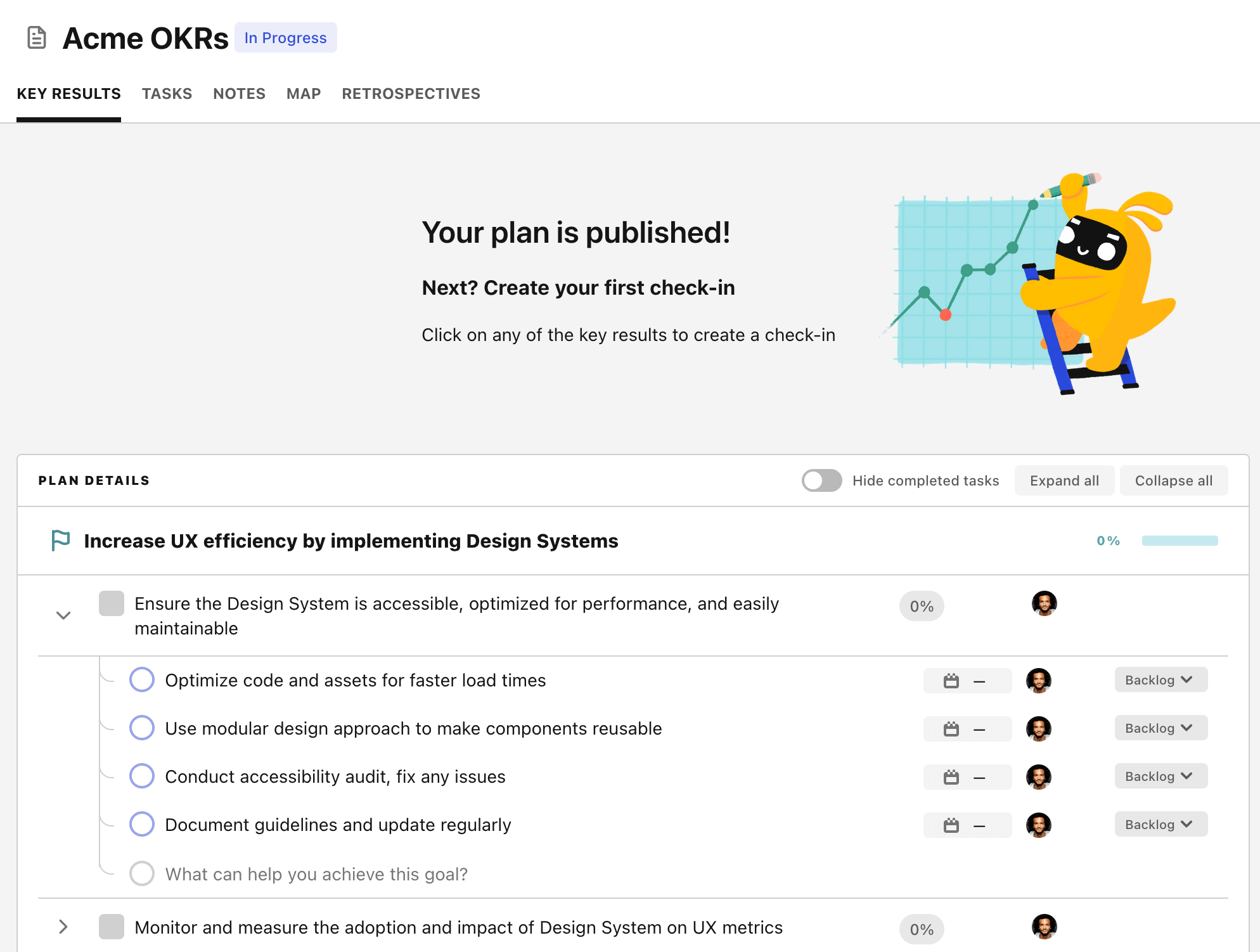OKR template to boost the number of student enrollments
Your OKR template
Secondly, there's a concerted effort to increase open-house event registration by 15%. Tactics to achieve this include cross-promotion with local businesses, using aggressive social media advertising strategies, and optimizing the registration process to make it more user-friendly.
The third outcome aims at a 10% increase in year-over-year enrollments. Enhancing the quality and attraction of academic programs and university facilities, improving recruitment strategies and staff training and investing in advertising campaigns targeted at potential new students serve as the initiatives to achieve this.
In summary, all the objectives and strategies aimed at boosting enrollments come together to create a comprehensive approach intending to attract more students through various channels and improving the overall appeal of the school.
ObjectiveBoost the number of student enrollments
KRAchieve a 20% increase in website inquiries about enrollments by the quarter's end
Offer incentives for enrollment inquiries
Implement a targeted online marketing campaign
Optimize the website for mobile users
KRIncrease open-house event registration rate by 15%
Collaborate with local businesses for cross-promotion
Develop an aggressive social media advertising strategy
Optimize the registration process for user-friendliness
KRUpsurge year-over-year enrollments by 10%
Enhance academic programs and university facilities
Improve recruitment strategies and staff training
Invest in advertising campaigns targeted at potential new students
How to edit and track OKRs with Tability
You'll probably want to edit the examples in this post, and Tability is the perfect tool for it.
Tability is an AI-powered platform that helps teams set better goals, monitor execution, and get help to achieve their objectives faster.
With Tability you can:
- Use AI to draft a complete set of OKRs in seconds
- Connect your OKRs and team goals to your project
- Automate reporting with integrations and built-in dashboard
Instead of having to copy the content of the OKR examples in a doc or spreadsheet, you can use Tability’s magic importer to start using any of the examples in this page.
The import process can be done in seconds, allowing you to edit OKRs directly in a platform that knows how to manage and track goals.
Step 1. Sign up for a free Tability account
Go tohttps://tability.app/signup and create your account (it's free!)
Step 2. Create a plan
Follow the steps after your onboarding to create your first plan, you should get to a page that looks like the picture below.

Step 3. Use the magic importer
Click on Use magic import to open up the Magic Import modal.
Now, go back to the OKR examples, and click on Copy on the example that you’d like to use.

Paste the content in the text import section. Don’t worry about the formatting, Tability’s AI will be able to parse it!

Now, just click on Import from text and let the magic happen.

Once your example is in the plan editor, you will be able to:
- Edit the objectives, key results, and tasks
- Click on the target 0 → 100% to set better target
- Use the tips and the AI to refine your goals
Step 4. Publish your plan
Once you’re done editing, you can publish your plan to switch to the goal-tracking mode.

From there you will have access to all the features that will help you and your team save hours with OKR reporting.
- 10+ built-in dashboards to visualise progress on your goals
- Weekly reminders, data connectors, and smart notifications
- 9 views to map OKRs to strategic projects
- Strategy map to align teams at scale